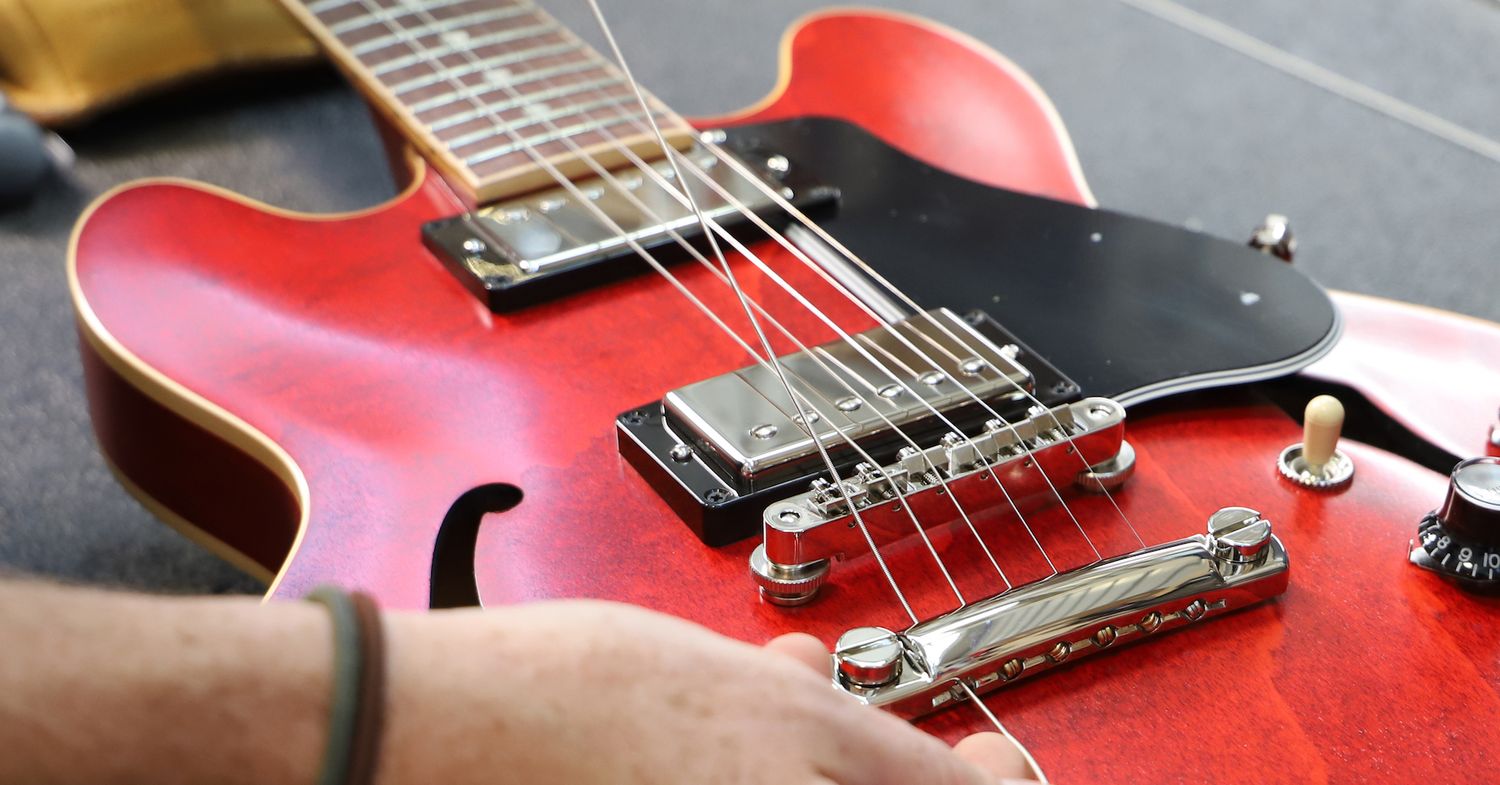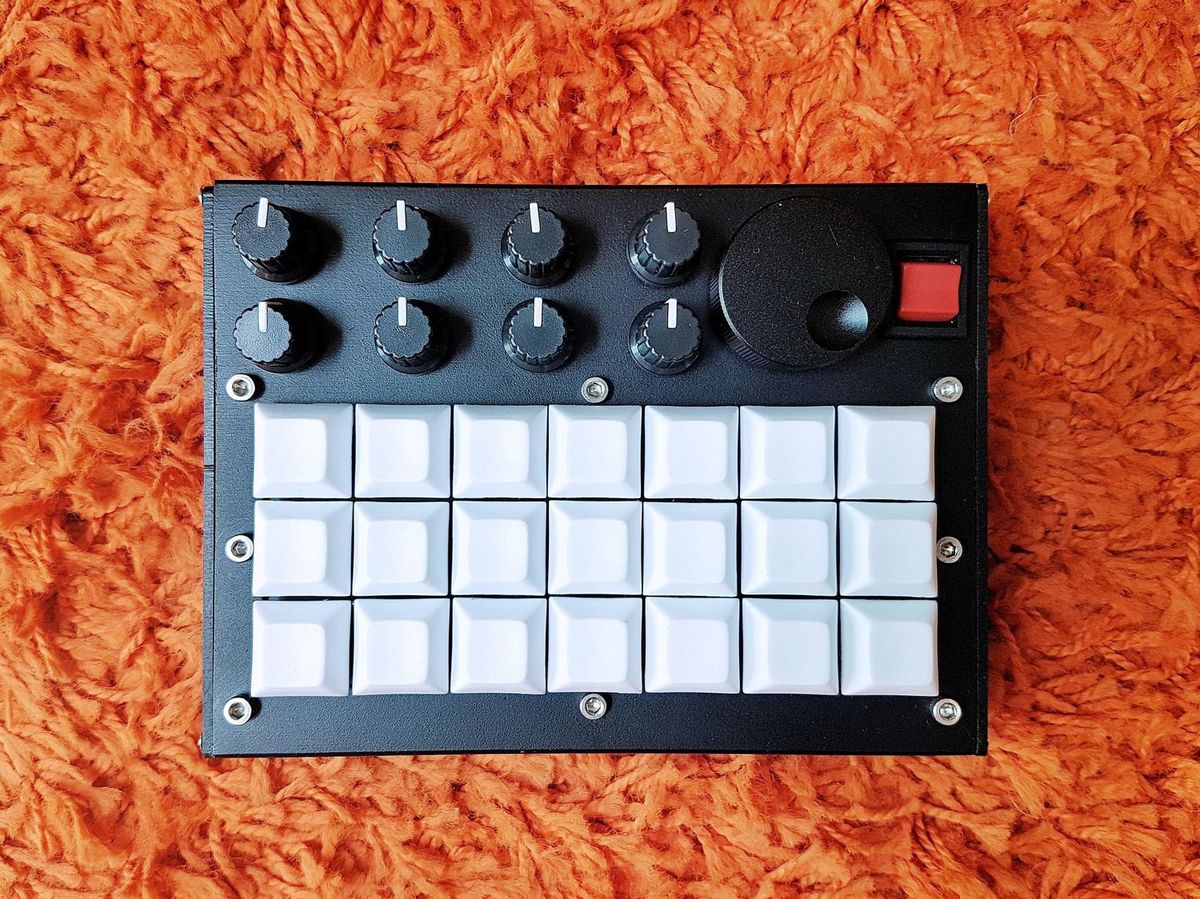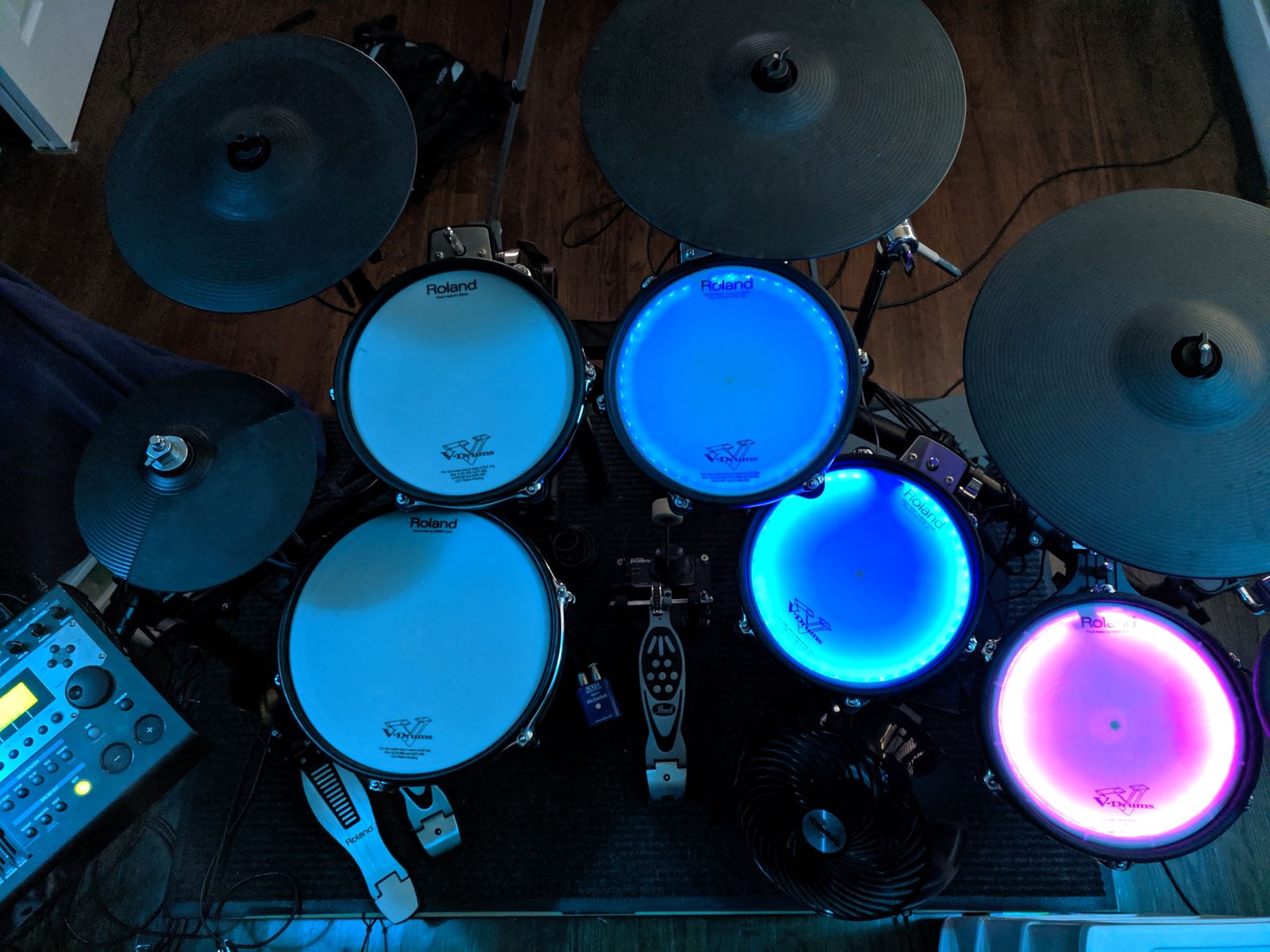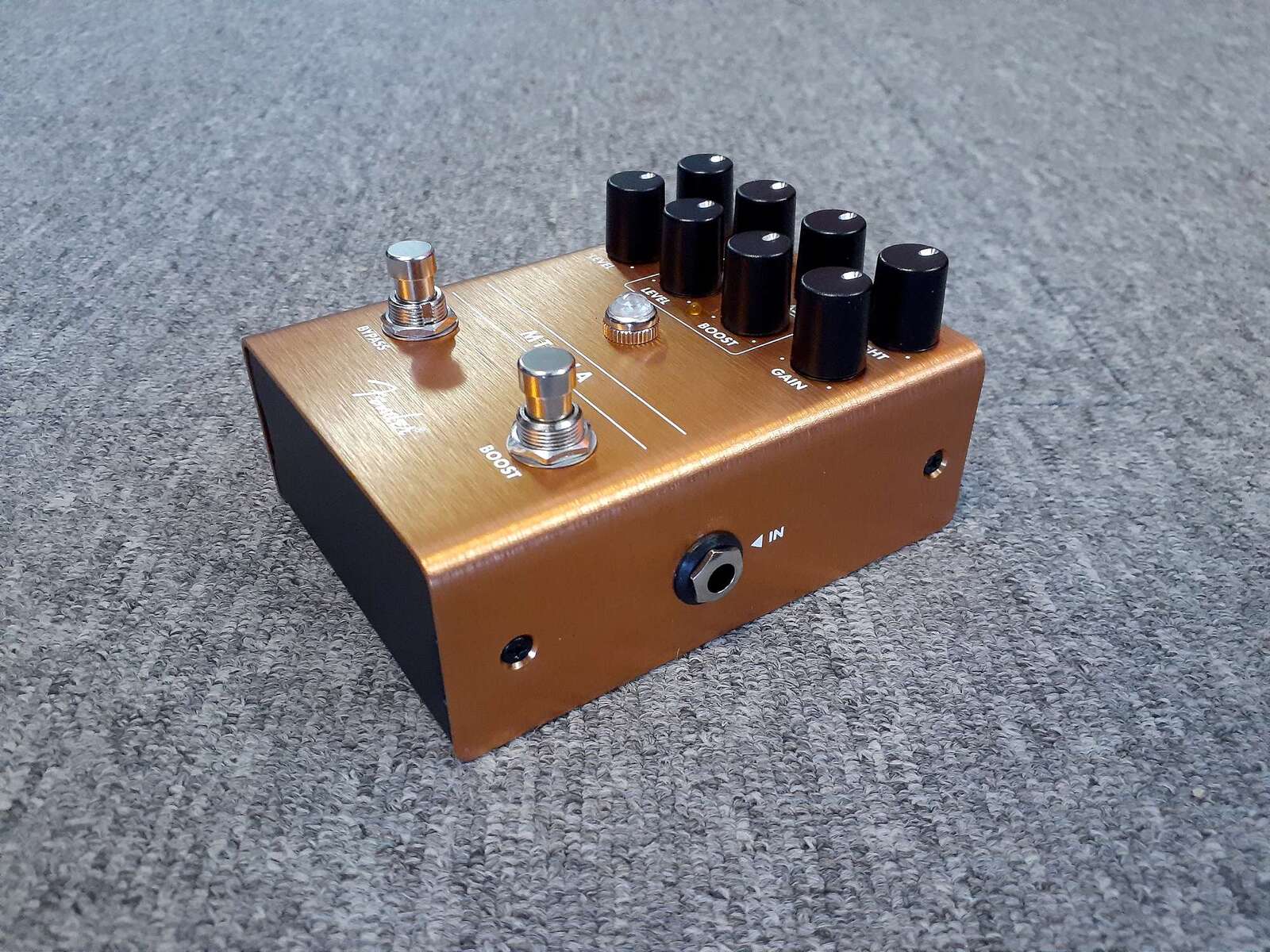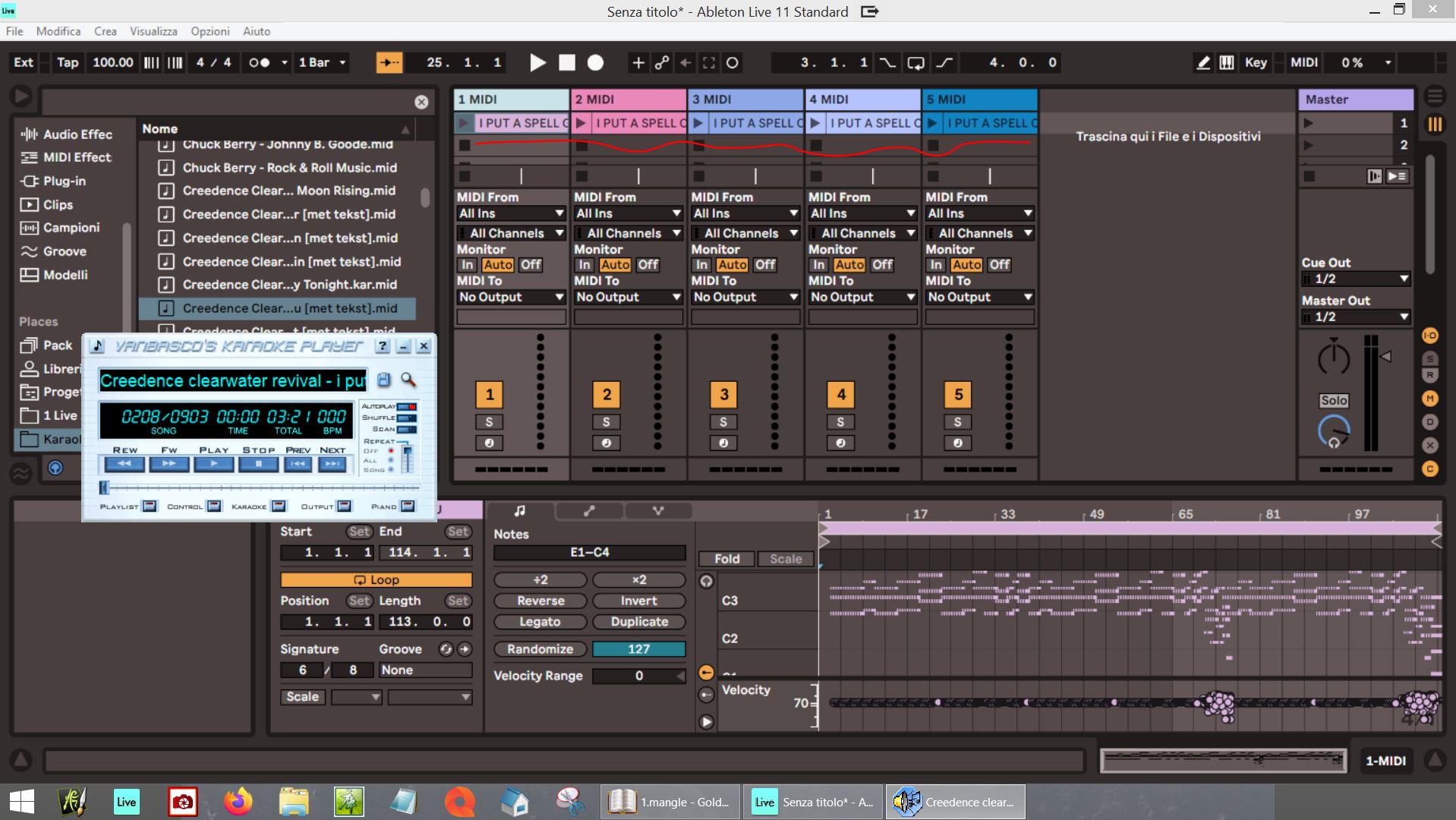Home>Production & Technology>MIDI>How To Make MIDI Guitar Sound Real


MIDI
How To Make MIDI Guitar Sound Real
Published: February 20, 2024
Learn how to make MIDI guitar sound real with these expert tips and techniques. Enhance your MIDI music production and achieve authentic guitar sounds.
(Many of the links in this article redirect to a specific reviewed product. Your purchase of these products through affiliate links helps to generate commission for AudioLover.com, at no extra cost. Learn more)
Table of Contents
- Introduction
- Choosing the Right MIDI Guitar Controller
- Selecting the Best MIDI Interface
- Understanding and Setting Up MIDI Mapping
- Utilizing Expression and Dynamics
- Using Realistic Guitar VSTs and Sound Libraries
- Incorporating Guitar Effects and Amp Simulations
- Fine-tuning and Customizing MIDI Guitar Settings
- Conclusion
Introduction
The world of music has witnessed a remarkable evolution with the advent of MIDI (Musical Instrument Digital Interface) technology. MIDI has revolutionized the way musicians create and produce music, offering a myriad of possibilities for enhancing the sound of various instruments, including the guitar. With MIDI, guitarists can seamlessly integrate their instrument into the digital realm, unlocking a universe of sonic potential and creative expression.
In this comprehensive guide, we will delve into the intricacies of making MIDI guitar sound real, bridging the gap between the organic warmth of a traditional guitar and the boundless capabilities of digital sound manipulation. Whether you're a seasoned guitarist looking to expand your sonic horizons or a budding musician eager to explore the fusion of analog and digital realms, this guide will equip you with the knowledge and techniques to elevate your MIDI guitar experience to new heights.
From selecting the right MIDI guitar controller and interface to understanding MIDI mapping and harnessing expression and dynamics, we will navigate through the essential elements that contribute to achieving a lifelike guitar sound through MIDI. Furthermore, we will explore the realm of realistic guitar VSTs (Virtual Studio Technology) and sound libraries, uncover the nuances of incorporating guitar effects and amp simulations, and delve into the art of fine-tuning and customizing MIDI guitar settings to tailor the sound to your unique artistic vision.
Embark on this journey with an open mind and a thirst for sonic exploration, as we unlock the secrets to making MIDI guitar sound remarkably real and expressive. By the end of this guide, you will possess a comprehensive understanding of the tools, techniques, and creative approaches necessary to breathe life into your MIDI guitar performances, paving the way for a seamless integration of traditional guitar sensibilities with the limitless potential of the digital realm. Let's embark on this transformative musical odyssey together, as we unravel the art of making MIDI guitar sound real.
Choosing the Right MIDI Guitar Controller
Selecting the right MIDI guitar controller is a pivotal decision that significantly influences the authenticity and playability of your MIDI guitar performances. When venturing into the realm of MIDI guitar, it's essential to consider various factors to ensure that the controller aligns with your playing style, preferences, and technical requirements. Here are key considerations to guide you in choosing the ideal MIDI guitar controller:
-
String Sensing Technology: Look for a MIDI guitar controller equipped with advanced string sensing technology. This feature enables the controller to accurately interpret the nuances of your playing, capturing subtle articulations, bends, and vibratos with remarkable precision. By effectively translating the intricacies of your guitar technique into MIDI data, a controller with superior string sensing technology enhances the realism and expressiveness of your performances.
-
Compatibility and Integration: Ensure that the MIDI guitar controller seamlessly integrates with your preferred DAW (Digital Audio Workstation) and MIDI software. Compatibility with a wide range of music production applications empowers you to harness the full potential of MIDI, effortlessly incorporating your guitar performances into diverse musical projects with ease.
-
Playability and Ergonomics: Consider the playability and ergonomics of the MIDI guitar controller. Opt for a controller that emulates the familiar feel and responsiveness of a traditional guitar, facilitating a smooth transition for guitarists venturing into the realm of MIDI. Ergonomic design elements, such as comfortable neck profiles and intuitive control layouts, contribute to a more natural and enjoyable playing experience.
-
Versatility and Expandability: Look for a MIDI guitar controller that offers versatility and expandability. Whether you seek a standalone MIDI guitar solution or a controller that integrates seamlessly with existing guitar hardware, the ability to adapt and expand your setup according to evolving creative needs is crucial.
-
Sensitivity and Dynamic Range: Assess the sensitivity and dynamic range of the MIDI guitar controller's tracking capabilities. A controller with high sensitivity and an expansive dynamic range ensures that your playing nuances are faithfully captured, allowing for nuanced expression and articulation in your MIDI performances.
By carefully considering these factors and conducting thorough research, you can make an informed decision when choosing the right MIDI guitar controller. Ultimately, the ideal controller should align with your artistic vision, technical requirements, and playing style, serving as a seamless conduit for translating the soulful essence of your guitar performances into the boundless realm of MIDI music production.
Selecting the Best MIDI Interface
When delving into the realm of MIDI guitar, selecting the best MIDI interface is a crucial step that significantly impacts the quality, flexibility, and overall performance of your MIDI setup. A MIDI interface serves as the bridge between your MIDI guitar controller and the digital environment, facilitating seamless communication and data transfer between the physical instrument and your music production software. To ensure a smooth and efficient integration of your MIDI guitar into your creative workflow, here are essential factors to consider when selecting the best MIDI interface:
-
Input and Output Configuration: Assess the input and output configuration of the MIDI interface to determine its compatibility with your MIDI guitar controller and other MIDI-equipped devices. Whether you require multiple input channels for accommodating diverse MIDI instruments or specialized output options for routing MIDI data to external hardware, the interface's I/O configuration should align with your specific connectivity needs.
-
Low Latency Performance: Prioritize MIDI interfaces that offer low-latency performance, minimizing the delay between your MIDI guitar input and the resulting sound output. Low latency is paramount for real-time monitoring and responsive playability, ensuring that your MIDI guitar performances remain tightly synchronized with your music production software, amplifiers, and effects processors.
-
Compatibility and Driver Support: Ensure that the MIDI interface is compatible with your operating system and music production software. Additionally, investigate the availability of reliable driver support and software updates for the interface, as seamless compatibility and ongoing support are essential for maintaining a stable and optimized MIDI guitar setup.
-
MIDI Thru and Merge Capabilities: Consider the presence of MIDI Thru and Merge functionalities in the interface, as these features enhance the versatility and routing capabilities of your MIDI setup. MIDI Thru facilitates the simultaneous transmission of MIDI data to multiple devices, while Merge functionality enables the merging of MIDI signals from multiple sources, empowering you to craft intricate MIDI guitar setups with ease.
-
Expandability and Integration: Evaluate the expandability and integration options offered by the MIDI interface. Look for interfaces that support additional MIDI I/O expansion modules or offer seamless integration with external control surfaces and hardware, providing room for future growth and enhanced connectivity within your MIDI guitar rig.
By carefully evaluating these factors and conducting thorough research, you can make an informed decision when selecting the best MIDI interface for your MIDI guitar endeavors. A reliable and well-suited MIDI interface acts as the cornerstone of a robust MIDI guitar setup, fostering seamless communication, low-latency performance, and expansive connectivity, ultimately empowering you to unleash the full potential of your MIDI guitar performances within the digital realm.
Understanding and Setting Up MIDI Mapping
MIDI mapping plays a pivotal role in shaping the interaction between your MIDI guitar controller and the virtual instruments, effects, and parameters within your music production environment. By comprehensively understanding and skillfully setting up MIDI mapping, you can harness the full potential of your MIDI guitar, seamlessly controlling a myriad of sonic elements and articulations with precision and expressiveness.
Grasping the Essence of MIDI Mapping
At its core, MIDI mapping involves assigning MIDI control messages, such as note data, pitch bend, modulation, and continuous controller (CC) values, to specific parameters and functions within your music production software or virtual instruments. This mapping process establishes a direct correspondence between the physical gestures and nuances of your guitar performance and the digital parameters you intend to manipulate, effectively bridging the gap between the tactile realm of guitar playing and the boundless sonic manipulations offered by MIDI technology.
Setting Up MIDI Mapping for Expressive Control
To embark on the journey of setting up MIDI mapping for your guitar controller, begin by identifying the parameters and functions you aim to control within your virtual instruments and effects. Whether it's adjusting the filter cutoff of a virtual synthesizer, modulating the tremolo depth of a guitar amp simulation, or triggering complex articulations in a sampled instrument, envision the sonic nuances you wish to articulate through your guitar performance.
Once the target parameters are identified, delve into your music production software's MIDI mapping interface. Many modern DAWs and virtual instrument plugins offer intuitive MIDI mapping capabilities, allowing you to assign MIDI control messages to on-screen knobs, sliders, buttons, and other user interface elements. Through this interface, establish the correspondence between your MIDI guitar's performance data and the desired parameters, effectively creating a dynamic and expressive mapping that aligns with your artistic vision.
Embracing Dynamic Control and Articulation
The beauty of MIDI mapping lies in its capacity to imbue your guitar performances with dynamic control and nuanced articulation. By mapping the subtle variations in your playing technique to parameters such as vibrato depth, note velocity, and timbre modulation, you can infuse your MIDI guitar performances with a lifelike expressiveness that transcends the confines of traditional guitar playing. Through meticulous MIDI mapping, you can unlock the potential to emulate the intricacies of acoustic guitar fingerpicking, the soulful bends of an electric guitar solo, and the dynamic swells of a resonant guitar chord progression, all within the digital domain.
Fine-Tuning and Iterative Refinement
As you delve deeper into the realm of MIDI mapping, embrace the iterative process of fine-tuning and refining your mappings to encapsulate the full spectrum of your guitar performance nuances. Experiment with different mapping configurations, sensitivity settings, and response curves to tailor the mapping to your playing style and artistic preferences. Through iterative refinement, you can sculpt a personalized MIDI mapping framework that amplifies the expressiveness and realism of your MIDI guitar performances, paving the way for captivating sonic expressions and emotive musical narratives.
In essence, understanding and setting up MIDI mapping is an artful endeavor that empowers you to bridge the realms of physical guitar performance and digital sonic manipulation, fostering a seamless integration of expressive control and artistic nuance within your MIDI guitar endeavors. By embracing the intricacies of MIDI mapping, you can elevate your MIDI guitar performances to new heights, transcending the boundaries of traditional guitar playing and venturing into a realm of boundless sonic creativity and emotive expression.
Utilizing Expression and Dynamics
Utilizing expression and dynamics is paramount in imbuing MIDI guitar performances with a lifelike and emotive quality that resonates with listeners on a profound level. By harnessing the inherent nuances of guitar playing and translating them into the realm of MIDI, musicians can evoke a sense of realism and depth, transcending the boundaries of traditional guitar performances. Here's how to effectively leverage expression and dynamics to elevate your MIDI guitar endeavors:
Embracing Articulation and Phrasing
The art of expression in MIDI guitar revolves around capturing the subtleties of articulation and phrasing inherent in traditional guitar playing. By leveraging techniques such as hammer-ons, pull-offs, slides, and vibrato, MIDI guitarists can infuse their performances with a sense of organic fluidity and nuanced phrasing. Through meticulous attention to these articulative nuances, MIDI guitar performances can exude a sense of authenticity and musicality that captivates the listener's ear.
Leveraging Velocity and Touch Sensitivity
Velocity and touch sensitivity play a pivotal role in shaping the dynamic range and responsiveness of MIDI guitar performances. By modulating the velocity of note triggers and the sensitivity of string interaction, musicians can emulate the natural ebb and flow of dynamics present in acoustic and electric guitar playing. This nuanced control over velocity and touch sensitivity empowers MIDI guitarists to convey a wide spectrum of emotions, from gentle caresses to impassioned crescendos, breathing life into their performances with unparalleled expressiveness.
Harnessing Modulation and Timbral Variation
Modulation and timbral variation serve as potent tools for infusing MIDI guitar performances with depth and character. By manipulating parameters such as pitch bend, modulation wheel, and timbre control, musicians can emulate the nuanced tonal shifts and expressive inflections characteristic of authentic guitar playing. Whether it's simulating the graceful bends of a blues guitar solo or the evocative timbral shifts of a fingerpicked acoustic passage, the judicious use of modulation and timbral variation enriches MIDI guitar performances with a captivating sense of sonic realism.
Unleashing Dynamic Layering and Textural Depth
Dynamic layering and textural depth elevate MIDI guitar performances to new heights of sonic richness and complexity. By judiciously layering multiple MIDI articulations, such as varying degrees of palm muting, string resonance, and harmonic embellishments, musicians can craft multidimensional guitar textures that resonate with depth and intricacy. This approach not only enriches the sonic tapestry of MIDI guitar performances but also amplifies the expressive potential, allowing for the seamless transition between delicate subtlety and resounding intensity within a single performance.
In essence, by embracing the nuances of expression and dynamics, MIDI guitarists can transcend the limitations of traditional guitar playing, delving into a realm of boundless creative expression and sonic artistry. Through the meticulous integration of articulation, touch sensitivity, modulation, and dynamic layering, musicians can breathe life into their MIDI guitar performances, evoking a sense of realism and emotive depth that captivates audiences and resonates with the soulful essence of guitar music.
Using Realistic Guitar VSTs and Sound Libraries
When striving to make MIDI guitar sound real, the selection of realistic guitar VSTs (Virtual Studio Technology) and sound libraries plays a pivotal role in shaping the sonic authenticity and expressive potential of your MIDI guitar performances. These software-based resources serve as the sonic building blocks that breathe life into your MIDI guitar, offering an expansive palette of meticulously sampled guitar tones, articulations, and performance nuances. Here's a detailed exploration of leveraging realistic guitar VSTs and sound libraries to elevate your MIDI guitar endeavors to new heights of sonic realism and emotive expression.
Embracing Authenticity and Artistry
Realistic guitar VSTs and sound libraries are meticulously crafted to capture the essence of acoustic and electric guitars, meticulously sampling a diverse range of playing techniques, tonal variations, and sonic idiosyncrasies. From the resonant warmth of fingerpicked acoustic guitars to the searing overtones of electric guitar power chords, these virtual instruments encapsulate the rich timbral intricacies and expressive potential of real guitars. By embracing these authentic sonic textures, MIDI guitarists can infuse their performances with a sense of artistry and realism that resonates with listeners on a profound level.
Exploring Multifaceted Articulations and Playing Styles
Realistic guitar VSTs and sound libraries offer a wealth of multifaceted articulations and playing styles, empowering MIDI guitarists to explore a diverse array of musical genres and performance techniques. Whether it's the delicate fingerstyle nuances of acoustic folk music, the aggressive palm-muted chugs of heavy metal riffing, or the soulful bends and vibratos of blues and rock solos, these virtual instruments provide a comprehensive sonic toolkit for capturing the nuances of various guitar playing styles. By delving into these multifaceted articulations, MIDI guitarists can enrich their performances with an unparalleled level of sonic diversity and expressive versatility.
Harnessing Expressive Performance Tools and Techniques
Realistic guitar VSTs and sound libraries often incorporate expressive performance tools and techniques, enabling MIDI guitarists to imbue their performances with lifelike dynamics and nuanced articulations. Features such as keyswitching, velocity layers, and dynamic response control empower musicians to modulate the tonal and dynamic characteristics of their MIDI guitar performances with remarkable precision. This level of expressive control facilitates the seamless emulation of natural guitar playing nuances, from the subtle variations in pick attack to the nuanced dynamics of legato phrasing, fostering a sense of expressive depth and musicality within MIDI guitar performances.
Tailoring Tonal Characteristics and Timbral Nuances
The flexibility inherent in realistic guitar VSTs and sound libraries allows MIDI guitarists to tailor the tonal characteristics and timbral nuances of their performances to align with their artistic vision. Whether it's sculpting the resonant body resonance of an acoustic guitar, dialing in the harmonic richness of a vintage electric guitar, or shaping the tonal contour of guitar effects and amplifiers, these virtual instruments provide a wealth of sonic customization options. This level of tonal flexibility empowers MIDI guitarists to craft personalized sonic signatures, ensuring that their MIDI guitar performances resonate with a sense of sonic individuality and artistic expression.
In essence, the utilization of realistic guitar VSTs and sound libraries serves as a cornerstone for achieving lifelike and expressive MIDI guitar performances. By embracing the authenticity, versatility, and expressive potential offered by these virtual instruments, MIDI guitarists can transcend the limitations of traditional guitar playing, venturing into a realm of boundless sonic creativity and emotive expression. From capturing the nuanced intricacies of acoustic guitar fingerpicking to unleashing the searing intensity of electric guitar power chords, realistic guitar VSTs and sound libraries empower MIDI guitarists to sculpt captivating sonic narratives that resonate with the soulful essence of guitar music.
Incorporating Guitar Effects and Amp Simulations
In the realm of MIDI guitar, the integration of guitar effects and amp simulations stands as a transformative catalyst, elevating the sonic potential and expressive versatility of MIDI guitar performances. By seamlessly incorporating a diverse array of effects and amplifier emulations, MIDI guitarists can transcend the sonic confines of traditional guitar setups, delving into a realm of boundless sonic creativity and emotive expression.
Harnessing the Power of Guitar Effects
Guitar effects serve as sonic embellishments that enrich MIDI guitar performances with a tapestry of tonal textures and expressive nuances. From time-honored classics such as reverb, delay, and chorus to avant-garde sonic manipulations like granular synthesis and spectral processing, the world of guitar effects offers a kaleidoscope of sonic possibilities. When integrated into MIDI guitar setups, these effects empower musicians to sculpt captivating sonic landscapes, infusing their performances with a sense of depth, dimension, and sonic artistry.
Amplifying Realism with Amp Simulations
Amp simulations represent a paradigm shift in the realm of MIDI guitar, offering faithful emulations of iconic amplifiers, speaker cabinets, and microphone configurations within a digital environment. These virtual amplifiers encapsulate the tonal nuances and dynamic responsiveness of classic tube amps, modern high-gain stacks, and boutique amplifiers, empowering MIDI guitarists to tailor their sonic signatures with unprecedented precision. Whether it's the searing overdrive of a cranked tube amp, the resonant warmth of a vintage combo, or the pristine clarity of a solid-state amplifier, amp simulations enable MIDI guitarists to sculpt their ideal guitar tones with remarkable fidelity and sonic flexibility.
Crafting Sonic Narratives and Expressive Journeys
By skillfully incorporating guitar effects and amp simulations into their MIDI guitar performances, musicians can craft captivating sonic narratives and expressive journeys that transcend the boundaries of traditional guitar playing. Whether it's the ethereal ambience of cascading reverbs, the hypnotic allure of rhythmic delays, or the searing intensity of overdriven power chords, these sonic embellishments imbue MIDI guitar performances with a sense of sonic individuality and emotive depth. The judicious application of effects and amp simulations empowers MIDI guitarists to evoke a diverse range of sonic moods and atmospheres, from intimate introspection to soaring anthemic grandeur, fostering a seamless integration of sonic creativity and emotive expression within their musical endeavors.
In essence, the incorporation of guitar effects and amp simulations stands as a cornerstone for realizing the full sonic potential and expressive depth of MIDI guitar performances. By harnessing the power of effects and amplifier emulations, MIDI guitarists can transcend the sonic limitations of traditional guitar setups, delving into a realm of boundless sonic creativity and emotive expression. From sculpting ethereal sonic landscapes to unleashing blistering sonic intensity, the integration of guitar effects and amp simulations empowers MIDI guitarists to embark on a transformative sonic odyssey, evoking a sense of sonic artistry and emotive depth that resonates with the soulful essence of guitar music.
Fine-tuning and Customizing MIDI Guitar Settings
Fine-tuning and customizing MIDI guitar settings play a pivotal role in sculpting the sonic character, playability, and expressive potential of MIDI guitar performances. By delving into the intricate realm of MIDI guitar settings, musicians can tailor the responsiveness, tonal characteristics, and performance nuances of their MIDI setups to align with their artistic vision and technical requirements.
Optimizing Tracking and Latency
One of the fundamental aspects of fine-tuning MIDI guitar settings revolves around optimizing tracking accuracy and minimizing latency. By calibrating the tracking sensitivity and note detection parameters of the MIDI guitar controller, musicians can ensure that their performances are faithfully translated into MIDI data with precision and immediacy. Additionally, adjusting buffer sizes and latency settings within the MIDI interface and music production software contributes to a responsive and seamless playing experience, enabling real-time monitoring and expressive playability.
Customizing Articulation and Expression
Customizing MIDI guitar settings empowers musicians to tailor the articulation and expression of their performances to emulate the nuances of traditional guitar playing. Parameters such as string sensitivity, fretboard response, and pitch bend range can be meticulously adjusted to capture the subtleties of hammer-ons, pull-offs, vibratos, and bends, fostering a sense of organic fluidity and expressive depth within MIDI guitar performances. Furthermore, customizing velocity curves and touch sensitivity settings allows for nuanced control over dynamics, enabling musicians to convey a wide spectrum of emotions and tonal nuances with remarkable precision.
Sculpting Tonal Character and Response
The ability to sculpt the tonal character and response of MIDI guitar performances through custom settings stands as a transformative tool for sonic exploration. By adjusting parameters such as string resonance, fretboard damping, and pickup sensitivity, musicians can tailor the tonal nuances and timbral characteristics of their MIDI guitar setups to align with diverse musical genres and playing styles. Furthermore, customizing the response curves of modulation and pitch bend controls facilitates the emulation of natural guitar playing techniques, enriching MIDI performances with lifelike expressiveness and sonic authenticity.
Harnessing Dynamic Control and Sensitivity
Fine-tuning MIDI guitar settings encompasses harnessing dynamic control and sensitivity to amplify the expressive potential of performances. By customizing the response curves of velocity, aftertouch, and modulation controls, musicians can imbue their MIDI guitar performances with a wide spectrum of dynamic nuances and tonal variations, from delicate whispers to resounding crescendos. This level of dynamic control fosters a seamless integration of emotive expression and sonic artistry, enabling musicians to evoke a sense of realism and depth within their MIDI guitar endeavors.
In essence, fine-tuning and customizing MIDI guitar settings represent a transformative journey of sonic refinement and expressive empowerment. By delving into the intricacies of tracking optimization, articulation customization, tonal sculpting, and dynamic control, musicians can elevate their MIDI guitar performances to new heights of sonic realism and emotive depth. This nuanced approach to MIDI guitar settings fosters a seamless integration of traditional guitar sensibilities with the boundless potential of the digital realm, empowering musicians to embark on a transformative sonic odyssey that resonates with the soulful essence of guitar music.
Conclusion
In the realm of music production, the fusion of traditional guitar sensibilities with the boundless potential of MIDI technology has ushered in a transformative era of sonic exploration and creative expression. Throughout this comprehensive guide, we have embarked on a captivating journey, unraveling the art of making MIDI guitar sound remarkably real and expressive. From selecting the right MIDI guitar controller and interface to understanding MIDI mapping, harnessing expression and dynamics, and integrating realistic guitar VSTs, effects, and amp simulations, we have delved into the essential elements that contribute to shaping the sonic identity of MIDI guitar performances.
As we conclude this transformative odyssey, it becomes evident that the convergence of MIDI and guitar playing transcends the boundaries of traditional music-making, offering a gateway to boundless sonic creativity and emotive expression. The seamless integration of MIDI technology with the soulful essence of guitar music empowers musicians to sculpt captivating sonic narratives, evoking a sense of sonic artistry and emotive depth that resonates with listeners on a profound level.
The journey of making MIDI guitar sound real is not merely a technical endeavor; it is a testament to the unyielding spirit of artistic innovation and sonic exploration. By embracing the nuances of MIDI mapping, expression, and dynamics, musicians can transcend the limitations of traditional guitar performances, delving into a realm of boundless sonic creativity and emotive expression.
As we part ways, armed with a comprehensive understanding of the tools, techniques, and creative approaches necessary to breathe life into MIDI guitar performances, it is essential to approach this transformative journey with an open mind and a thirst for sonic exploration. The fusion of traditional guitar sensibilities with the limitless potential of MIDI technology heralds a new era of sonic artistry, empowering musicians to craft captivating sonic narratives that resonate with the soulful essence of guitar music.
In essence, the art of making MIDI guitar sound real is a testament to the unyielding spirit of artistic innovation and sonic exploration. By seamlessly integrating traditional guitar sensibilities with the boundless potential of MIDI technology, musicians can embark on a transformative sonic odyssey, evoking a sense of sonic artistry and emotive depth that resonates with listeners on a profound level. Let us carry forth this newfound knowledge and embark on a sonic odyssey that transcends the boundaries of traditional music-making, forging a path of boundless creativity and emotive expression within the realm of MIDI guitar endeavors.

